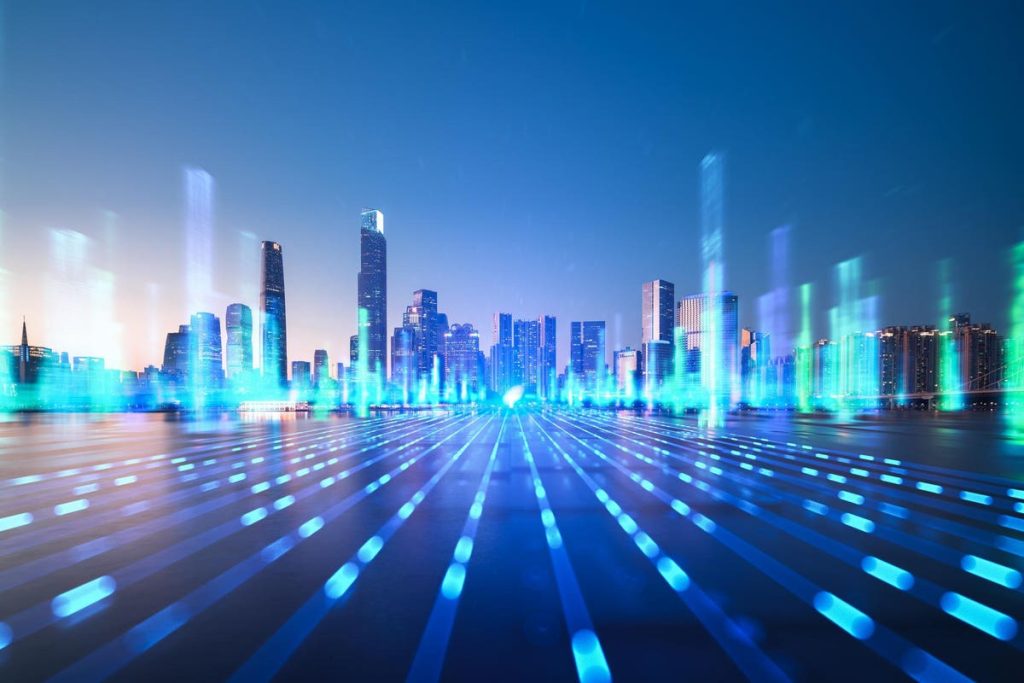Increasingly, technology isn’t just impacting our workplaces and personal lives—it’s being leveraged across entire cities to improve and enhance a variety of public services and functions. These “smart cities” are designed to make it easier for citizens and visitors to navigate traffic, access essential services, use energy efficiently and much more.
The application of evolving technologies including artificial intelligence, the Internet of Things and blockchain may soon dramatically transform urban living for the better. Below, 18 members of Forbes Technology Council discuss a few of the smart-city technologies on the horizon they believe will genuinely improve services and enhance everyday living.
1. Integration of IoT Devices With AI-Driven Traffic-Management Systems
One promising smart-city technology is the integration of Internet of Things devices with AI-driven traffic-management systems. By analyzing real-time traffic data and coordinating traffic signals, these systems can significantly reduce congestion, optimize transit efficiency and lower greenhouse gas emissions. This improvement will positively impact the daily lives and commutes of citizens. – Austin Lawson, Thirium, Inc.
2. Autonomous Vehicles
Autonomous vehicles have the potential to revolutionize transportation in smart cities by reducing congestion, improving safety, increasing efficiency and providing greater accessibility to individuals who are unable to drive. This technology can also help reduce the environmental impact of transportation. Still, challenges such as safety concerns and job displacement must be addressed. – Rudy Shoushany, DxTalks
Forbes Technology Council is an invitation-only community for world-class CIOs, CTOs and technology executives. Do I qualify?
3. Ubiquitous 5G Access
5G access will be incorporated everywhere as smart cities evolve, allowing all users to access 3D data at very low latency. This will allow more advanced artificial intelligence and augmented reality applications to be deployed. – Nick Cherukuri, ThirdEye Gen Inc.
4. Energy Monitoring And Testing
One smart-city technology that’s already being introduced in some cities is energy monitoring and testing. Essentially, an algorithm will check electricity usage versus a company’s needs and automatically adjust such things as brightness and power sources. The goal of this technology is to reduce energy waste and make power bills more affordable for businesses, and I believe it will roll out to other big cities soon. – Thomas Griffin, OptinMonster
5. Smart Energy Grids
Smart cities can only live up to their name if they employ smart grids for energy sustainability. Smart grids can effectively rationalize the distribution of power in a grid, personalize energy distribution according to users’ past behaviors and patterns, and instantly detect anomalies that can foreshadow a potential outage. Supply and demand become efficiently balanced and optimized. – AJ Abdallat, Beyond Limits
6. Integration Of Distributed Energy Resources With Clean-Energy Systems
One emerging smart-city technology is the integration of distributed energy resources with advanced clean-energy grid-management systems such as solar panels and wind turbines. By using these resources alongside advanced management systems, cities can facilitate more efficient energy usage, avoid power outages and help citizens lead happy lives. – Margarita Simonova, ILoveMyQA
7. Fleet-Tracking Technology
I’ve had the pleasure of working with companies that provide intelligent fleet-tracking technology and aggregate billions of data points about how commercial fleets are moving. This data can help with everything from city planning to supporting electrification efforts. As we become more intelligent about supply chains and the interconnectedness of our cities, this data is critical. – Lewis Wynne-Jones, ThinkData Works
8. Widespread Collection Of Big Data
Collecting big data from people, infrastructure and vehicles can help city planners and architects optimize buildings and improve energy efficiency. Real-time data analysis can help people travel safely, find the best routes and manage personal energy usage. Utilizing data to improve multiple aspects of life is key to realizing the potential of smart cities. – Jeff Tao, TDengine
9. Observability As A Service
In May 2023, we learned NetGain Systems will bring its IT observability capabilities to the Cerebro Smart IoT Platform from Iveda Solutions. I’m neither a partner nor a sponsor, but as a fan of evolving tech, I’m very excited to see what comes from this partnership. I think that an AI-enhanced smart-city platform with integrated IT monitoring means observability as a service deserves our attention. – Arnie Gordon, Arlyn Scales
10. Low-Power, Low-Cost Wireless Sensors For Infrastructure Management
Nearly every aspect of human life has been digitized, yet bridges, tunnels, electrical and water grids, sewers, and other real-world infrastructure has been largely untouched by digital transformation due to the lack of a crucial element: low-power, low-cost wireless sensors that can act as a seamless link between machine learning and artificial intelligence and the physical world. – Vitaly Kleban, Everynet
11. Localized Solar Power And Solar Energy Storage
On a large scale, moving toward localized solar power and solar energy storage will change how we approach power management, especially in rural areas. On a smaller scale, I’ve personally benefited greatly from smart meters that identify power and usage signatures and proactively alert you if there is an indication of a potential maintenance issue. – Elise Carmichael, Lakeside Software
12. Fully Connected, City-Specific Traffic Networks
Smart infrastructure will drive a reimagined transportation system. Autonomous cars as envisioned by Elon Musk and others today probably won’t exist. Instead, smart cars will operate within a fully connected, city-specific network that enables real-time communication between both cars and external devices and structures—such as traffic lanes, signals and so on—sharing information that will keep everyone on track and safe. – Hamid Farooqui, Sogolytics
13. Multifunctional Robots
I look forward to the day when every municipality employs a team of Boston Dynamics-style robots that can be deployed to improve the quality of life for citizens through a variety of tasks—“Fix all the roads,” “Build a school,” “Deploy solar,” and so on—optimized by AI to maximize the benefit to society. – Sam Glassenberg, Level Ex
14. Blockchain-Based Tech
Blockchain-based smart-city technology can transform urban systems by enhancing transparency, security and efficiency. It reduces costs, increases trust and promotes sustainability in energy, transportation and waste management. This creates livable and equitable environments, improving citizens’ quality of life. – Kenneth Holley, Silent Quadrant
15. Smart Parking
Smart parking will become a game-changer for city dwellers. With the convenience of reserving your spot before even leaving home, morning commutes don’t have to be such an annoying hassle anymore, and you can enjoy living and working in a city that much more. – Matt Pierce, Immediate
16. Improved Train Transit
Smart cities must have better transit options, because better options can help with efficiency and mitigate environmental concerns. I think we can expect to see more trains (including both high-speed and light rail), along with stations that have options for riders once they get off, such as bikes or e-scooters. – Jordan Yallen, MetaTope
17. Outpatient Health Kiosks
Smart cities may one day feature AI-operated, outpatient healthcare kiosks. You will be able to walk up to one of the kiosks, which will scan your face and other biometrics and be able to provide an elementary diagnosis—potentially even dispense medication. This will allow healthcare facilities to deliver medical services closer to the consumer and, when necessary, refer patients to a full-service facility. – Adam Sandman, Inflectra Corporation
18. AR-Powered Public Service Information
One smart-city technology I am excited about is the use of augmented reality to improve public services. AR can be used for wayfinding, highlighting public transport stops and optimizing routes. It could also enhance the tourism experience, providing visitors with helpful information and location-based insights. – Heather Wilde, theDifference Consulting
Read the full article here










